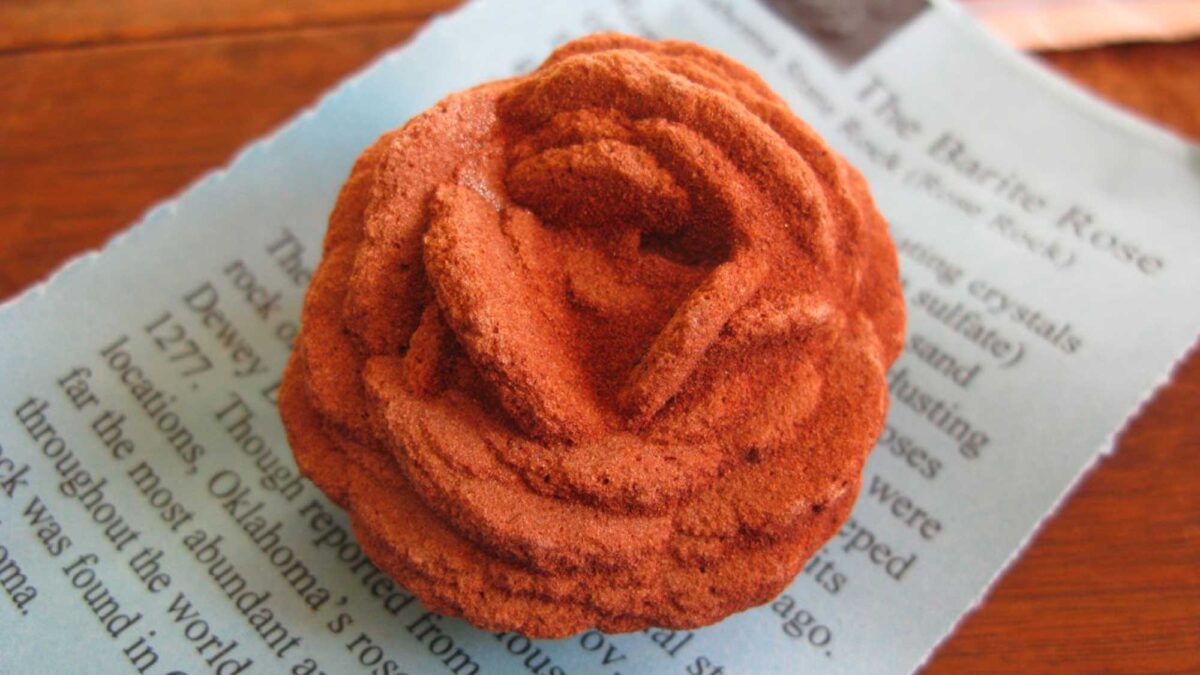Snapshot: Overview of the mineral resources of the Central Lowland region of the South-Central United States, including portions of Missouri, Kansas, Oklahoma, and Texas.
Topics covered on this page: Overview; Glacial Deposits; Evaporites; Garnets; Mica; Resources (references and further reading about minerals).
Credits: Most of the text of this page is derived from "Mineral resources of the South Central US" by Allen Macfarlane, chapter 5 in The Teacher-Friendly Guide to the Earth Science of the South-Central U.S., edited by Mark D. Lucas, Robert M. Ross, and Andrielle N. Swaby (published in 2015 by the Paleontological Research Institution). The book was adapted for the web by Elizabeth J. Hermsen and Jonathan R. Hendricks in 2021–2022. Changes include formatting and revisions to the text and images. Credits for individual images are given in figure captions.
Updates: Page last updated February 11, 2022.
Image above: A sample of barite desert rose from Oklahoma. Photograph by "pengrin" (Flickr; Creative Commons Attribution-NonCommercial 2.0 Generic license; image cropped and resized).
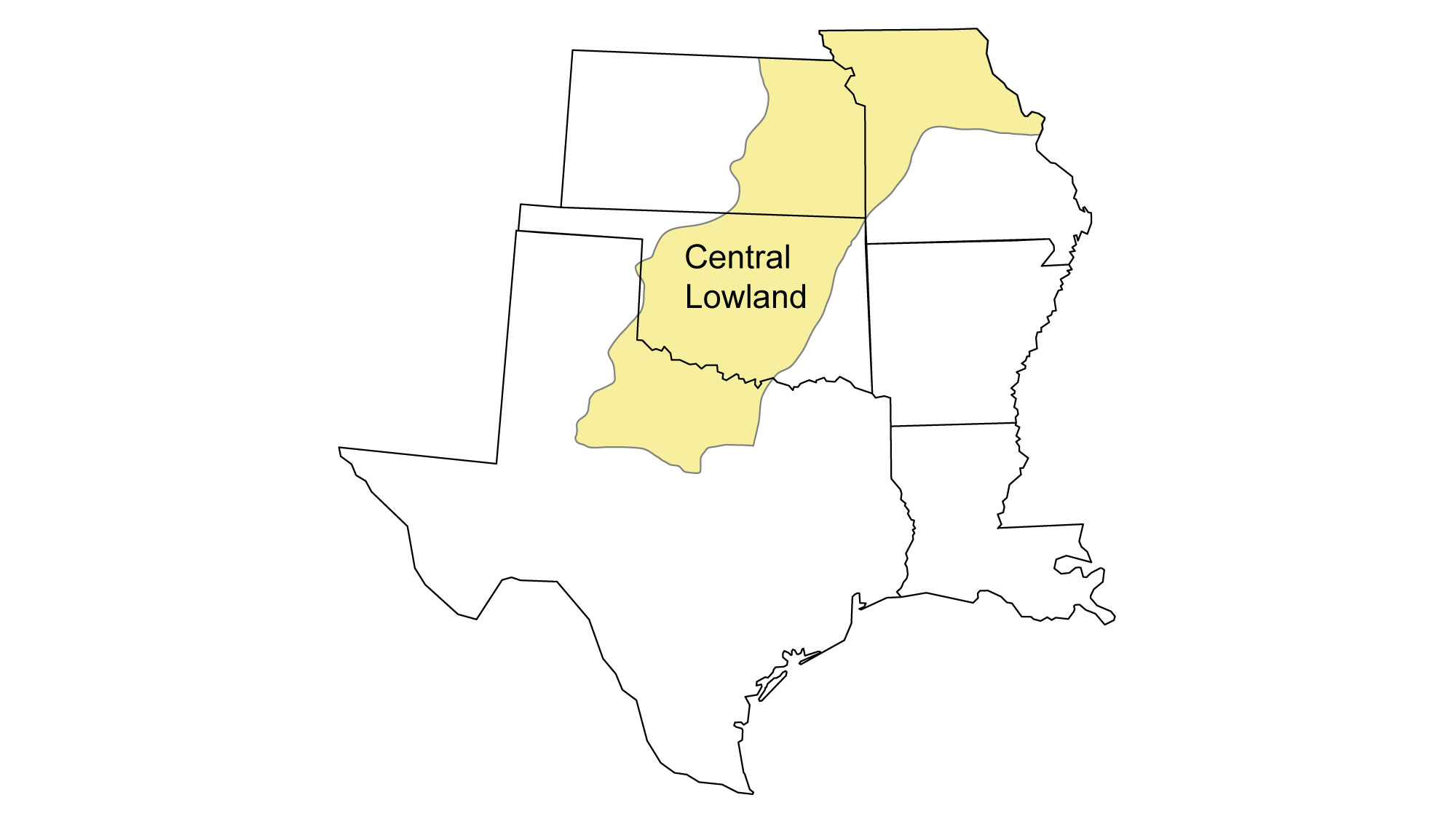
Overview
Mineral resources in the Central Lowland have accumulated primarily due to the deposition of sediment.
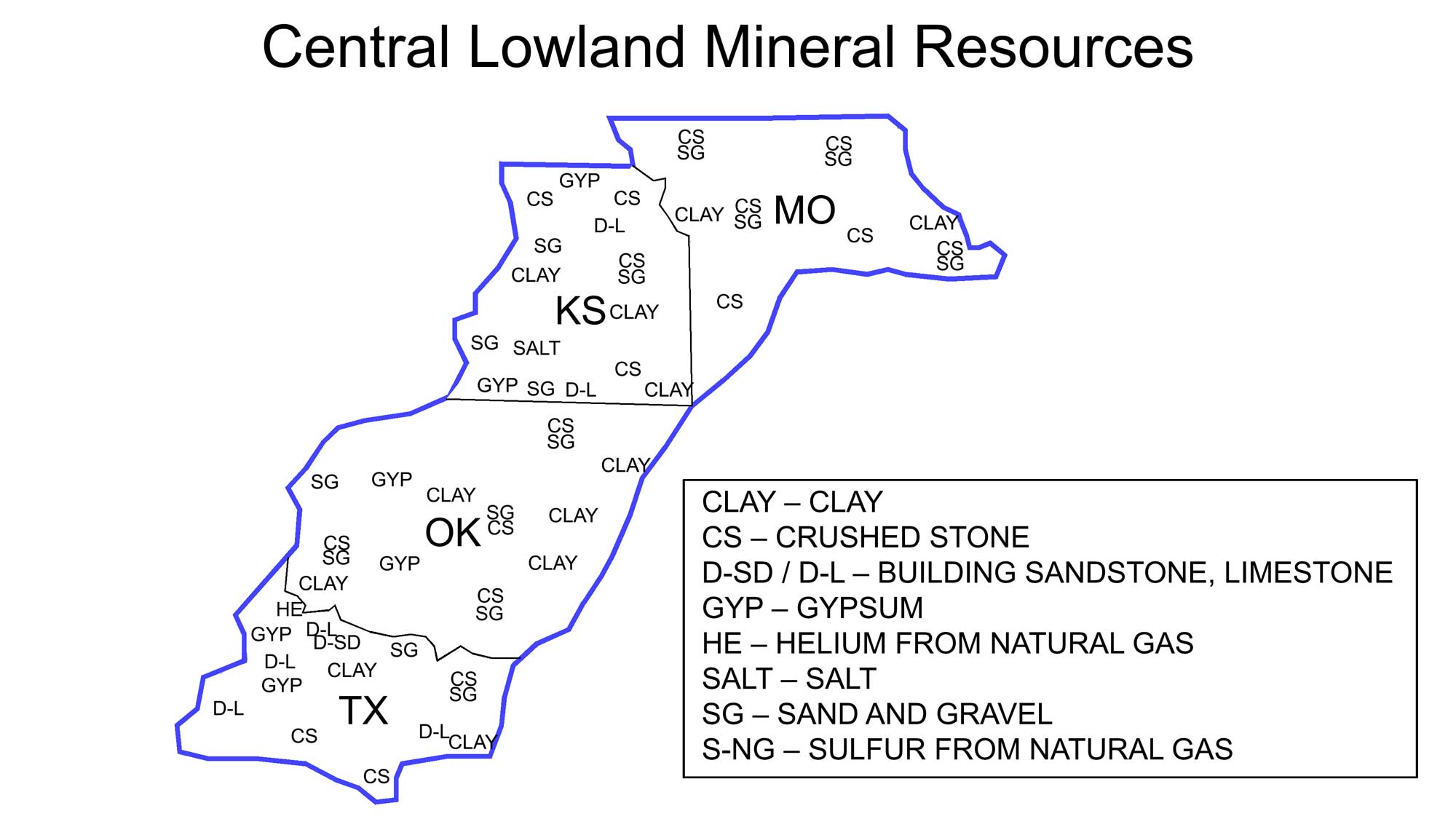
Principal mineral resources of the Central Lowland. Image adapted from the USGS 2009 State Minerals Yearbook (public domain).
The region’s surface rocks are sedimentary strata from the Pennsylvanian and Permian, covered by glacial, river, and wind-blown deposits from the Quaternary and Holocene. Sources of non-organic sediment (sand and finer-grained materials) are derived from erosion, while organic carbonate sediment accumulated in shallow seas to form limestone. Ancient forests produced layers of organic debris that eventually formed coal. All of these depositional patterns have also been influenced by cyclical fluctuations in sea level, producing cyclothems: repeated sequences of terrestrial shale, sandstone, and coal layered with marine shale and limestone.
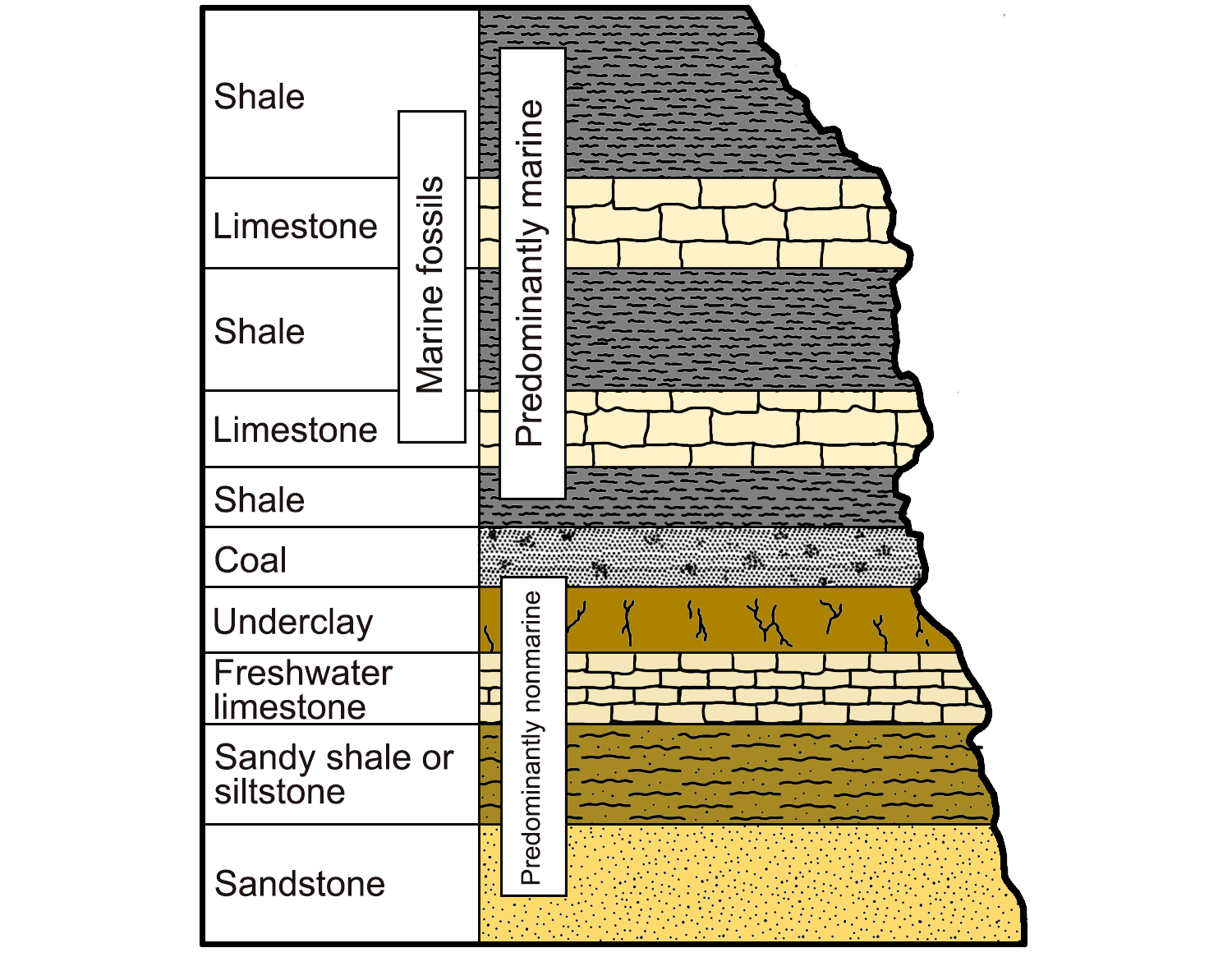
An example of a cyclothem, alternating sequences of marine and nonmarine sedimentary rocks characterized by their light and dark colors. Image modified from original by Wade Greenberg-Brand (after image from Levin, 2006, The Earth Through Time, 8th ed.), published in The Teacher-Friendly Guide to the Geology of the Southeastern U.S., 2nd ed., edited by Andrielle N. Swaby, Mark D. Lucas, and Robert M. Ross (published by the Paleontological Research Institution) (CC BY-NC-SA 4.0 license).
Glacial deposits
Episodes of Quaternary glaciation and erosion in northeast Kansas and northern Missouri left behind discontinuous patches of glacial deposits consisting of till interspersed with sand and gravel outwash. As a result of all these processes, sand, gravel, stone, limestone, and clay occur abundantly throughout the Central Lowland, and all are quarried for use in construction. Industrial sand is mined at several locations in Oklahoma and Texas, primarily for use in glassmaking.
Evaporites: Gypsum and halite (salt)
During and after the formation of Pangaea, the humid and tropical Carboniferous environment transitioned to the hot and arid climate of the Permian. These arid conditions led to the formation of hypersaline, shallow seas with restricted circulation, and layers of evaporite minerals were deposited as these seas evaporated. Today, Permian evaporite beds in Kansas, Oklahoma, and Texas are mined for halite and gypsum.
Halite
Halite is mined in two ways. When deposited in thick beds, salt can be excavated by mechanically carving and blasting it out. This method, called “room and pillar” mining, usually requires that pillars of salt be left at regular intervals to prevent the mine from collapsing.
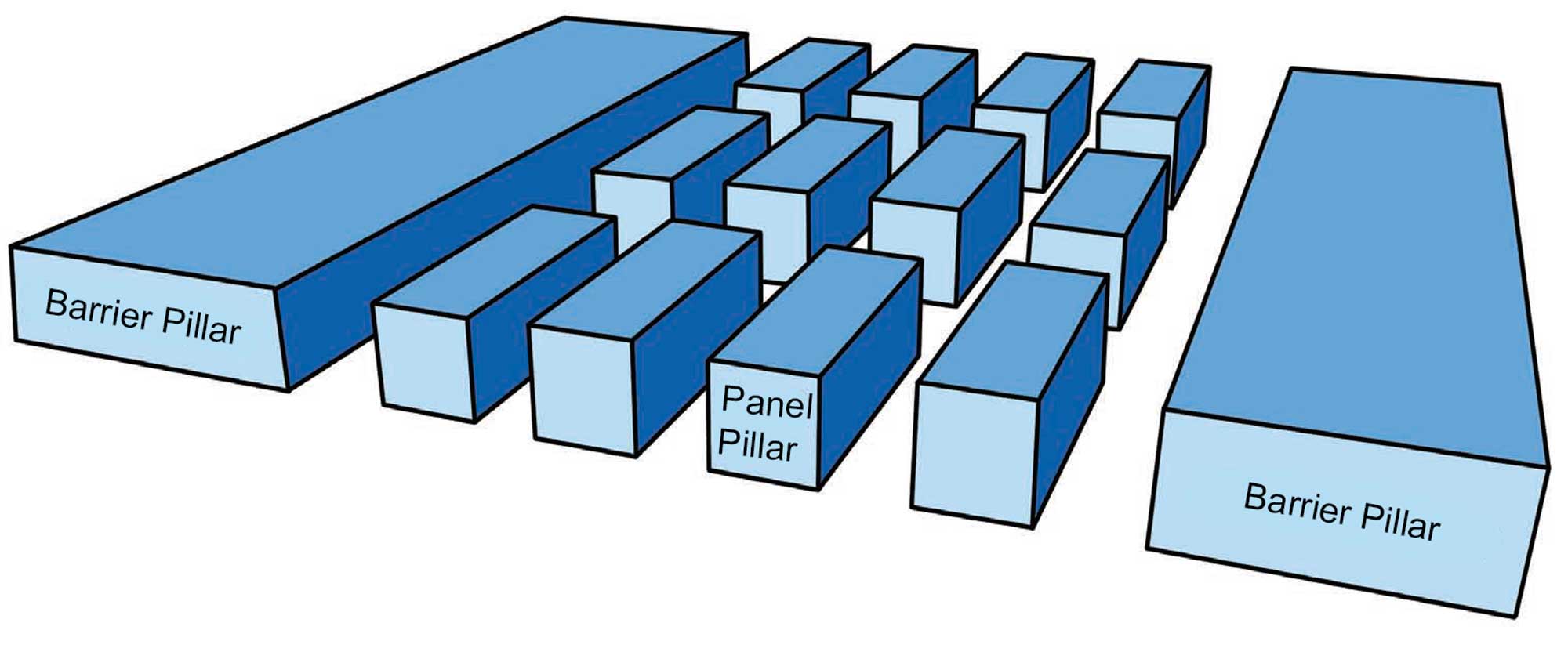
In pillar and room mining, the mine is divided up into smaller areas called "panels." Groups of panels are separated from one another by extra-large (barrier) pillars that are designed to prevent total mine collapse in the event of the failure of one or more regular-sized (panel) pillars. Image by Wade Greenberg-Brand, adapted from image by "Swinsto101" (Wikimedia Commons; Creative Commons Attribution-ShareAlike 3.0 Unported license) and modified for the Earth@Home project.
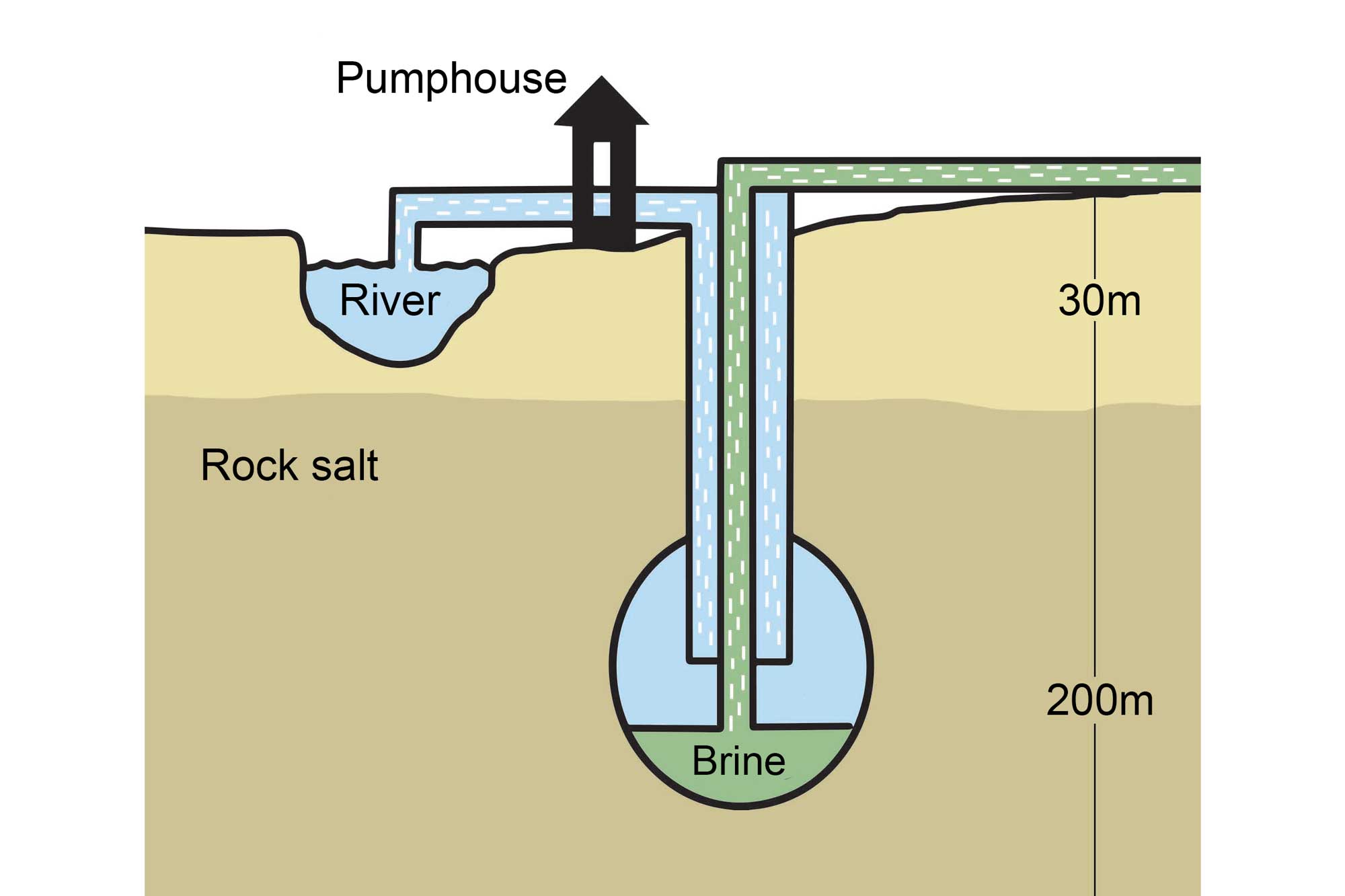
An example of solution mining that involves the pumping of fresh water through a borehole drilled into a subterranean salt deposit. Image by Wade Greenberg-Brand, adapted from image by the Salt Association and modified for the Earth@Home project.
Gypsum
Selenite, a variety of gypsum, is commonly found where Permian rocks appear at the surface, most notably in the Salt Plains of Oklahoma. In many locations, crystals of selenite are impregnated with sand and clay and are often referred to as “sand crystals.”
Interactive 3D model of the selenite variety of gypsum. Model by MSU GGP (Sketchfab; Creative Commons Attribution 4.0 International license).
In Salt Plains National Wildlife Refuge, groundwater seeping through salt- and gypsum-saturated sand becomes concentrated with these minerals, spurring the formation of selenite crystals with a distinctive hourglass-shaped sand inclusion.
"Crystal digging at Salt Plains National Wildlife Refuge" by DiscoverOklahoma (YouTube).
The Salt Plains are the only place in the world where this phenomenon occurs. Barite roses can also be found at the surface in central Oklahoma. Due to their attractive form, sand crystals and barite roses are often sought after as collectibles.
Interactive 3D model of a specimen of barite desert rose from Oklahoma. Model by Museum of Mineralogy and Petrography, UAIC (Sketchfab).
Garnets
Igneous activity has also contributed to the formation of minerals found in the Central Lowland. During the late Cretaceous, eastern Kansas experienced episodes of volcanism. Some magma solidified in the necks of erupting volcanoes, eventually becoming kimberlite. These deposits, exposed by erosion at several locations in northeastern Kansas, yield small garnets.
Mica
In southeastern Kansas, igneous intrusions led to the formation of lamproite sills and pipes. The lamproite contains shiny flakes of mica, which, when first observed in the 1870s, led to reports of silver and the formation of a mining town called Silver City.
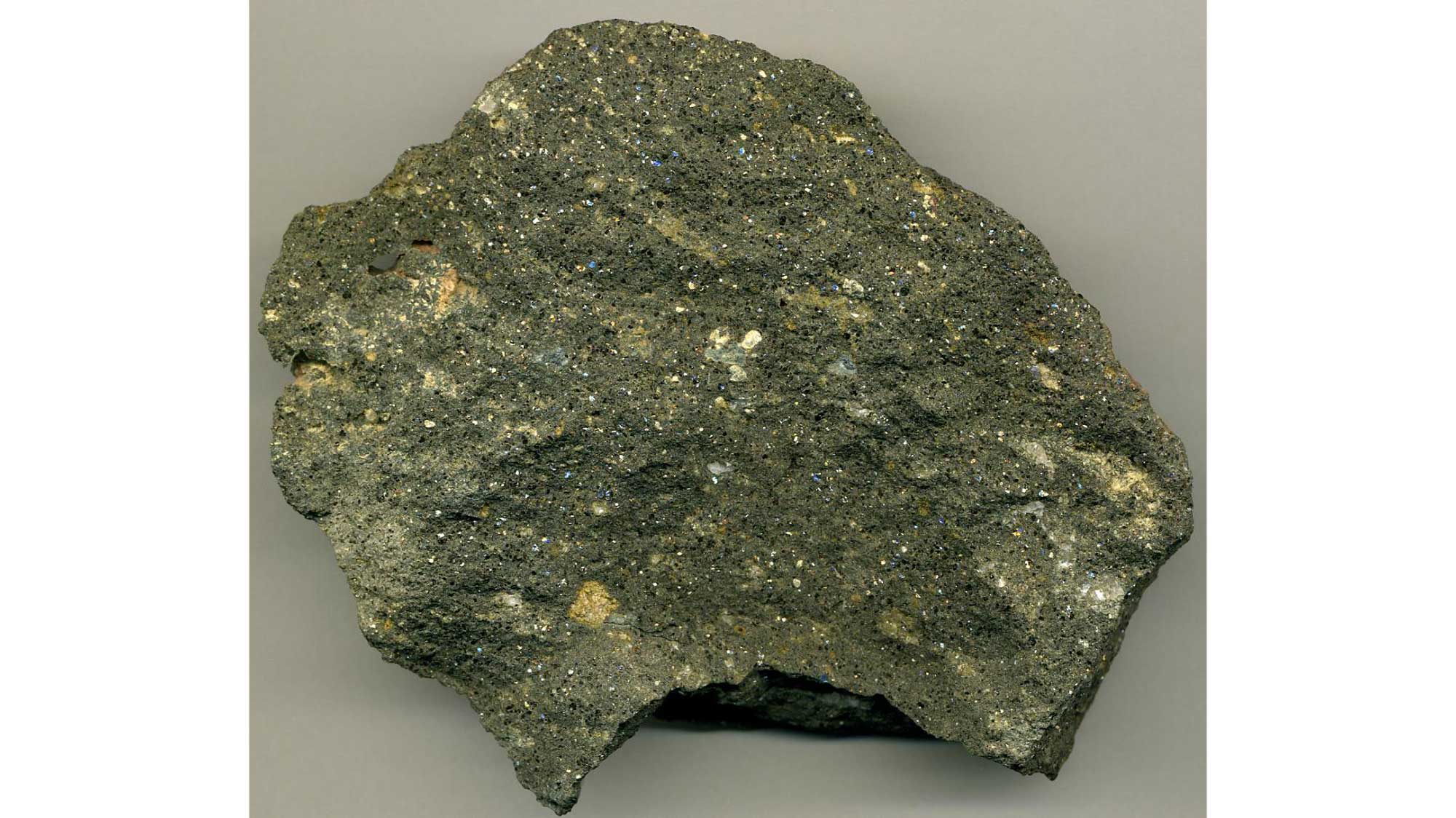
Sample of lamproite from the Oligocene of Colorado. Photograph by James St. John (Flickr; Creative Commons Attribution 2.0 Generic license).
Although the lamproite does not actually contain silver, it is still mined today for its mica (used in polymers, coatings, and construction). In addition, the lamproite itself is ground and used as a mineral supplement in cattle feed.
Other resources
Ancient sedimentation patterns and tectonic activity have favored the placement of widespread fossil fuel resources in the Central Lowland. Processing plants in Texas and Kansas recover commercial quantities of helium gas, an important byproduct of natural gas extraction. Non-commercial deposits of asphalt, formed by the breakdown of petroleum in the underlying rock, are also common in eastern Oklahoma.
The Central Lowland does not contain economically viable metal deposits. However, copper-bearing minerals can be found in the Permian rocks of southern Kansas, parts of Oklahoma, and north-central Texas.
Resources
Resources from the Paleontological Research Institution
Digital Atlas of Ancient Life: Minerals (collection of 3D models on Sketchfab): https://skfb.ly/6WxTo
Digital Encyclopedia of Earth Science: Minerals: https://earthathome.org/de/minerals/



